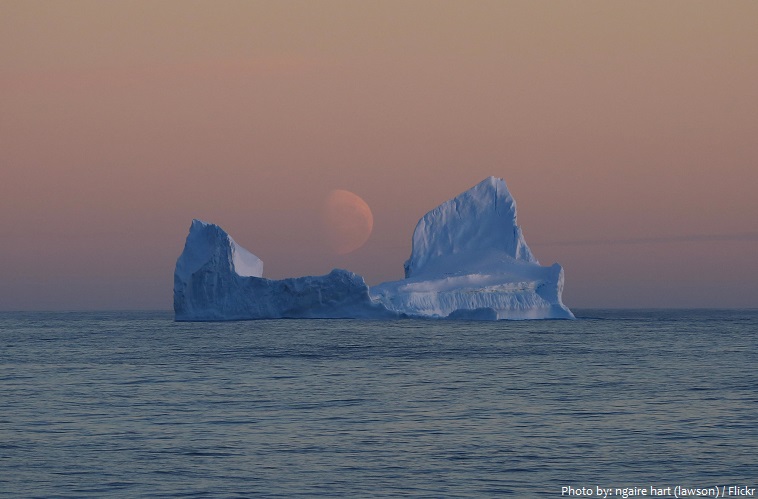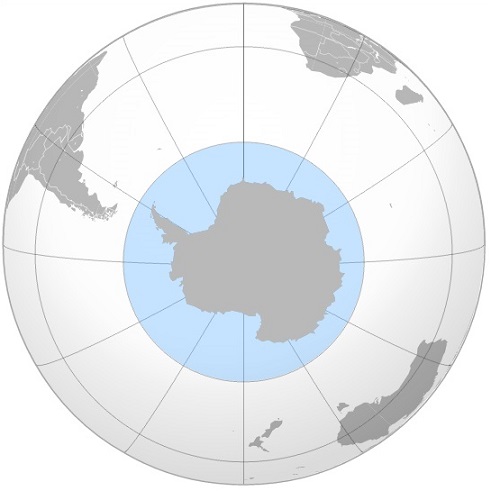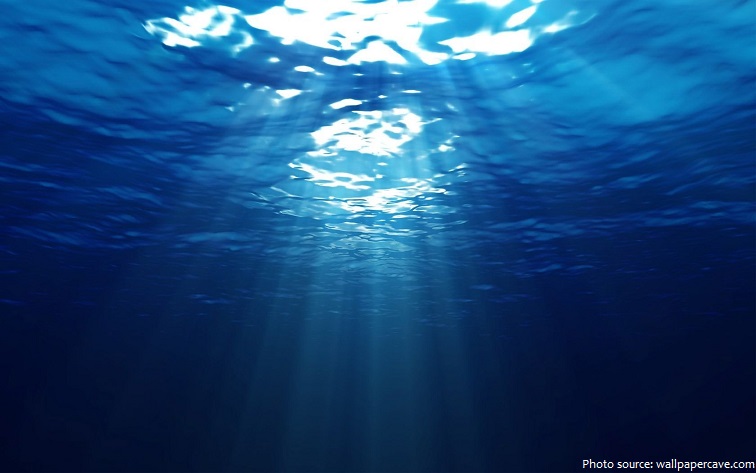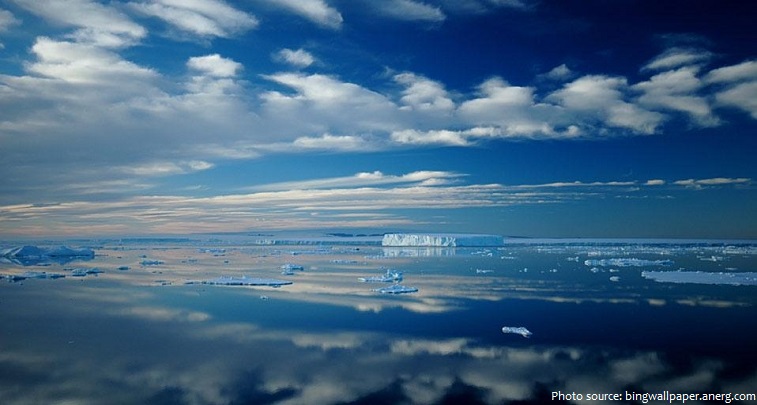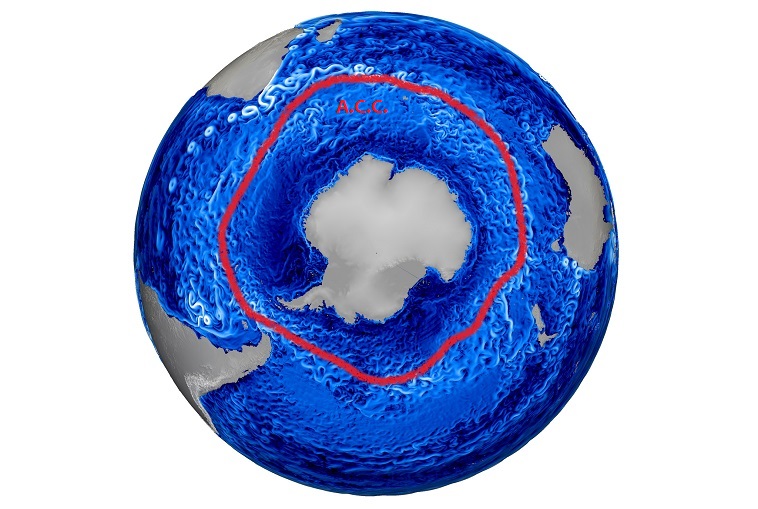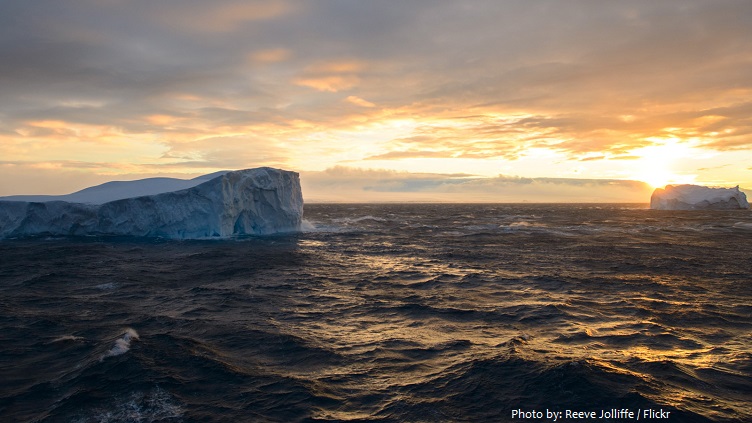The Southern Ocean, also known as the Antarctic Ocean or the Austral Ocean is comprised of the most southern ocean water of the world and surrounds Antarctica.
The Southern Ocean extends from the coast of Antarctica north to 60 degrees south latitude.
It covers approximately 4% of the Earth’s surface.
The Southern Ocean covers an area of approximately 20,330,000 square kilometers (7,850,000 square miles).
The Southern Ocean is regarded as the fourth-largest of the five principal oceanic divisions: smaller than the Pacific, Atlantic, and Indian Oceans but larger than the Arctic Ocean.
The Southern Ocean has a volume of 71,800,000 cubic kilometers (17,225,000 cubic miles).
The Southern Ocean has typical depths of between 4,000 and 5,000 meters (13,000 and 16,000 feet) over most of its extent with only limited areas of shallow water.
The Southern Ocean’s greatest depth of 7,236 meters (23,740 feet) occurs at the southern end of the South Sandwich Trench.
This ocean zone is where cold, northward flowing waters from the Antarctic mix with warmer subantarctic waters.
Sea temperatures vary from about −2 to 10°C (28 to 50°F).
The Antarctic Ocean lies in the farthest edge of the Southern Hemisphere, and is consequently severely impacted by the sun’s seasonal influence. In particular, during the colder months, when the sun is not shining directly on the ocean, the ice packs melt to an average low of 2.6 million square kilometers. When the sun moves away from the ocean, the ice packs rebuild.
In winter the ocean freezes outward to 65 degrees south latitude in the Pacific sector and 55 degrees south latitude in the Atlantic sector, lowering surface temperatures well below 0 degrees Celsius.
Because of the icebergs and the most powerful winds on Earth, ships have a problem traveling on the ocean all year long.
It’s home to the world’s largest ocean current, the Antarctic Circumpolar Current that flows clockwise from west to east around Antarctica. It is 21,000 kilometers (13,000 miles) long. The total transport of the ACC at Drake Passage is estimated to be around 135 Sv, or about 135 times the transport of all the world’s rivers combined.
For many years only four oceans were officially recognized, and then in the spring of 2000, the International Hydrographic Organization established the Southern Ocean, and determined its limits.
Geographers disagree on the Southern Ocean’s northern boundary or even its existence, sometimes considering the waters part of the South Pacific, South Atlantic, and Indian Oceans instead.
The Southern Ocean is the ‘newest’ named ocean.
The Southern Ocean, geologically the youngest of the oceans, was formed when Antarctica and South America moved apart, opening the Drake Passage, roughly 30 million years ago.
Exploration of the Southern Ocean was inspired by a belief in the existence of a Terra Australis — a vast continent in the far south of the globe to “balance” the northern lands of Eurasia and North Africa — which had existed since the times of Ptolemy.
By way of his voyages in the 1770s, Captain James Cook proved that waters encompassed the southern latitudes of the globe.
The first land south of the parallel 60° south latitude was discovered by the Englishman William Smith, who sighted Livingston Island on 19 February 1819.
Only in the 19th century Antarctica was discovered and explored during various expeditions.
A variety of marine animals exist and rely, directly or indirectly, on the phytoplankton in the Southern Ocean. Antarctic sea life includes penguins, blue whales, orcas, colossal squids and fur seals.
The Southern Ocean probably contains large, and possibly giant, oil and gas fields on the continental margin. Placer deposits, accumulation of valuable minerals such as gold, formed by gravity separation during sedimentary processes are also expected to exist in the Southern Ocean.
The icebergs that form each year around in the Southern Ocean hold enough fresh water to meet the needs of every person on Earth for several months. For several decades there have been proposals, none yet to be feasible or successful, to tow Southern Ocean icebergs to more arid northern regions (such as Australia) where they can be harvested.
Major operational ports include: Rothera Station, Palmer Station, Villa Las Estrellas, Esperanza Base, Mawson Station, McMurdo Station, and offshore anchorages in Antarctica.
Yacht races have been held in the Southern Ocean, such as the Volvo Ocean Race, Velux 5 Oceans Race, Vendée Globe, Jules Verne Trophy and Global Challenge.
